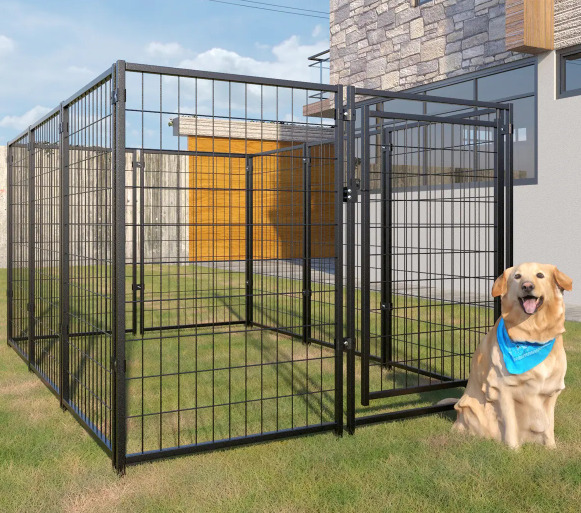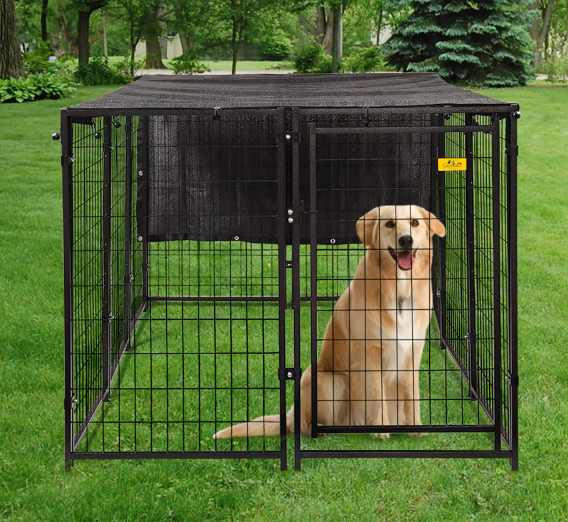For many pet owners, their furry friends are not just animals but cherished members of the family. Ensuring the safety and freedom of our pets is a top priority. One crucial element in achieving this balance is the dog fence. In this comprehensive guide, we will explore the vital role of dog fences in providing both safety and freedom to our beloved companions.
The Need of Dog Fence for Safety
Protecting Your Pet
Safety is paramount when it comes to your pet. As much as we love them, we cannot deny that curiosity can sometimes lead them into dangerous situations. Unfenced yards and open spaces can pose significant risks, including traffic accidents, encounters with wildlife, and the ingestion of harmful substances. A dog fence acts as a protective barrier, preventing your pet from wandering into harm’s way.
Keeping Unwanted Visitors Out
Beyond the protection of your pet, dog fences also serve as a deterrent to unwanted visitors. This includes other animals that might threaten or harm your pet and people who may have less than honorable intentions. A properly designed outdoor dog fence provides a clear boundary, reducing the likelihood of these unwanted interactions.
The Freedom to Roam
Exercise and Play
Dogs are active animals that require exercise and play to stay healthy and happy. Dog fences allow them the freedom to roam and play in a controlled environment. This is especially valuable for those without access to large, open areas. Your pet can run, fetch, and enjoy the outdoors within the safety of the fence.
Mental Stimulation
Freedom doesn’t just mean physical space; it also encompasses mental stimulation. Dog fence creates an environment where your pet can explore, sniff, and engage with their surroundings. This mental stimulation is crucial for their well-being, preventing boredom and destructive behavior.
Socialization
If you have multiple pets, a dog fence can enable safe interaction between them. It allows them to socialize, play, and bond while ensuring their safety. Additionally, it can help in controlled introductions between your pet and new furry friends.

Types of Dog Fence
Traditional Dog Fences
Traditional dog fences, made of materials like wood, vinyl, or metal, are visible physical barriers. They come in various styles and heights, offering both security and aesthetic appeal. Traditional fences are ideal for those who prioritize a visible boundary and can be customized to suit your yard and pet’s needs.
Invisible Dog Fences
Invisible dog fences, also known as electronic or underground fences, use a buried wire and a special collar to establish a boundary. They offer a less obtrusive option, maintaining the aesthetics of your property. However, they require training to ensure your pet understands the boundary and responds to the collar’s signals.
Hybrid Solutions
Some pet owners opt for a combination of traditional and invisible dog fence. This approach combines the visibility and security of a physical fence with the hidden boundary reinforcement of an invisible fence. It’s a versatile choice, providing the best of both worlds.
Training and Responsiveness with Dog Fence
Regardless of the type of dog fence you choose, training your pet is essential. Dogs need to understand the boundaries and recognize the signals from invisible fence collars. This training should be positive and reward-based, ensuring your pet associates the fence with safety, not fear.
Regular responsiveness checks are also crucial. Ensure your pet’s collar is functioning correctly, and they remain aware of the dog fence’s presence. Consistency in training and monitoring is key to their safety and freedom.

Maintaining Your Dog Fence
To keep your dog fence effective, regular maintenance is essential. For traditional fences, this may involve checking for loose boards, rust, or damaged sections. Invisible fence systems require inspections of the wire and collar. Ensuring everything is in good working order will maintain the safety and freedom your pet enjoys.
Ensuring Legal and Ethical Responsibilities
Complying with Local Regulations
Before installing a dog fence, it’s essential to check local regulations and laws regarding pet ownership and fencing. Some areas may have specific requirements for fence height, design, or installation. Ensuring compliance with these regulations not only keeps your pet safe but also prevents any potential legal issues.
Responsible Pet Ownership
Dog fences play a crucial role in responsible pet ownership. They ensure your dog remains in a secure area, reducing the chances of them becoming a nuisance to neighbors or causing damage to others’ properties. Respecting your neighbors’ boundaries and maintaining a well-maintained fence promotes positive community relations.
Ethical Considerations
Responsible pet owners consider the ethical implications of pet confinement. It’s essential to strike a balance between safety and freedom. Ensure that your pet still receives adequate exercise, mental stimulation, and social interaction while being contained within the fence. This ethical responsibility adds an important dimension to the role of removable outdoor dog fence in pet safety and freedom.
In the realm of pet ownership, the role of dog fence is undeniable. They strike a delicate balance between providing safety and allowing freedom. Whether you choose a traditional fence, an invisible fence, or a combination of both, the objective remains the same: to protect and enable your pet to explore, play, and thrive in a secure environment. By investing in the right outdoor dog fences for large dogs and implementing appropriate training, you can provide your pet with the best of both worlds – a life filled with safety and freedom.